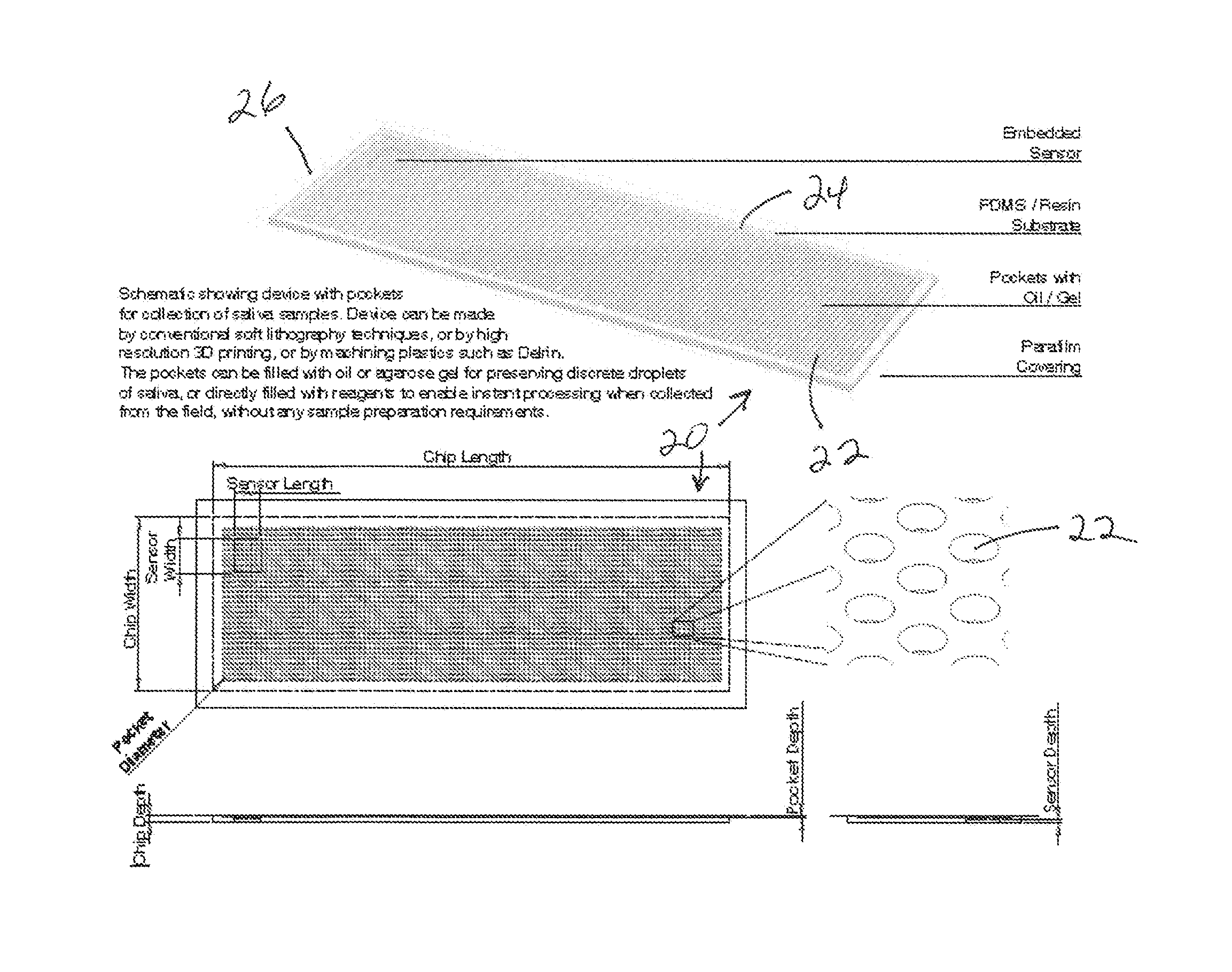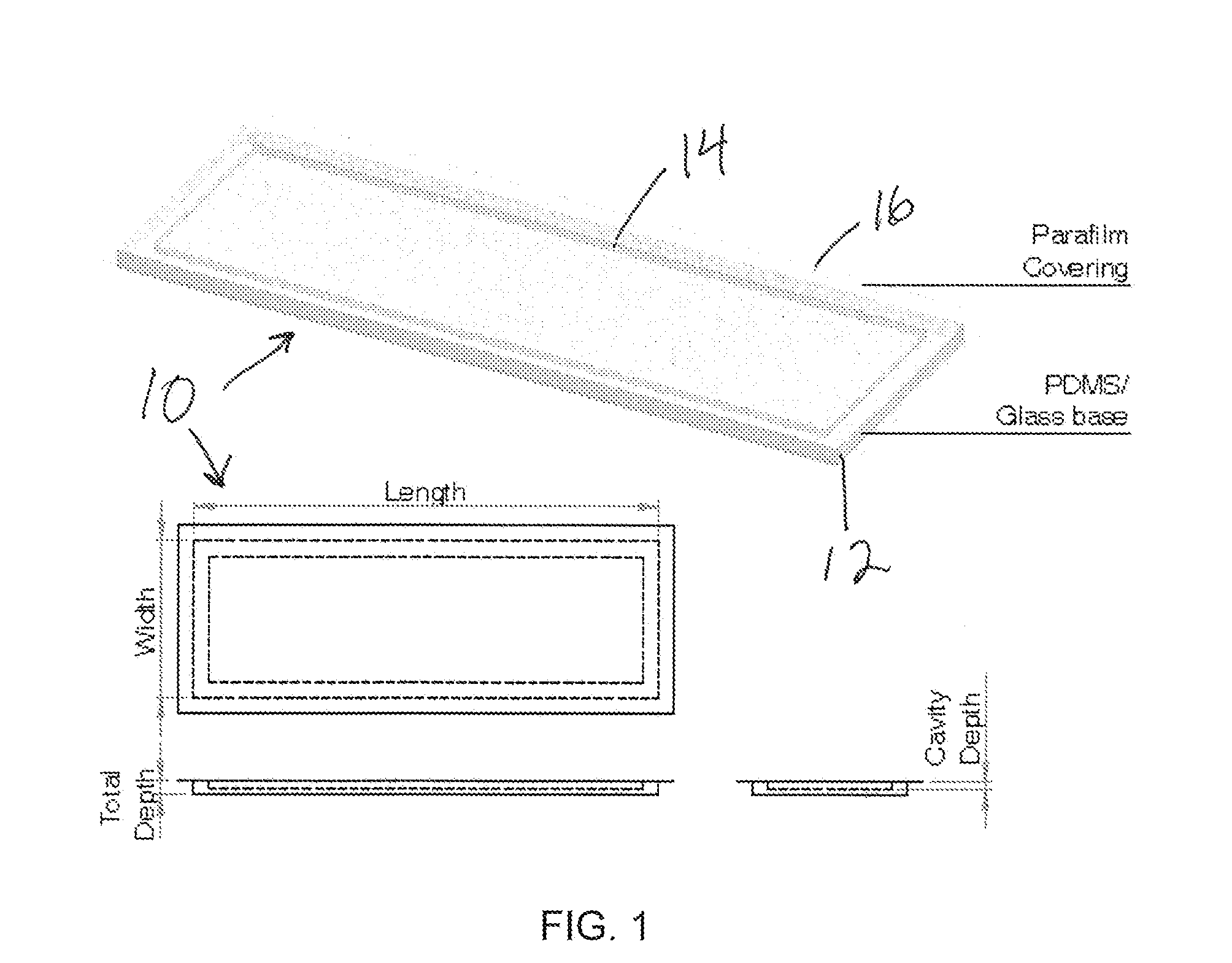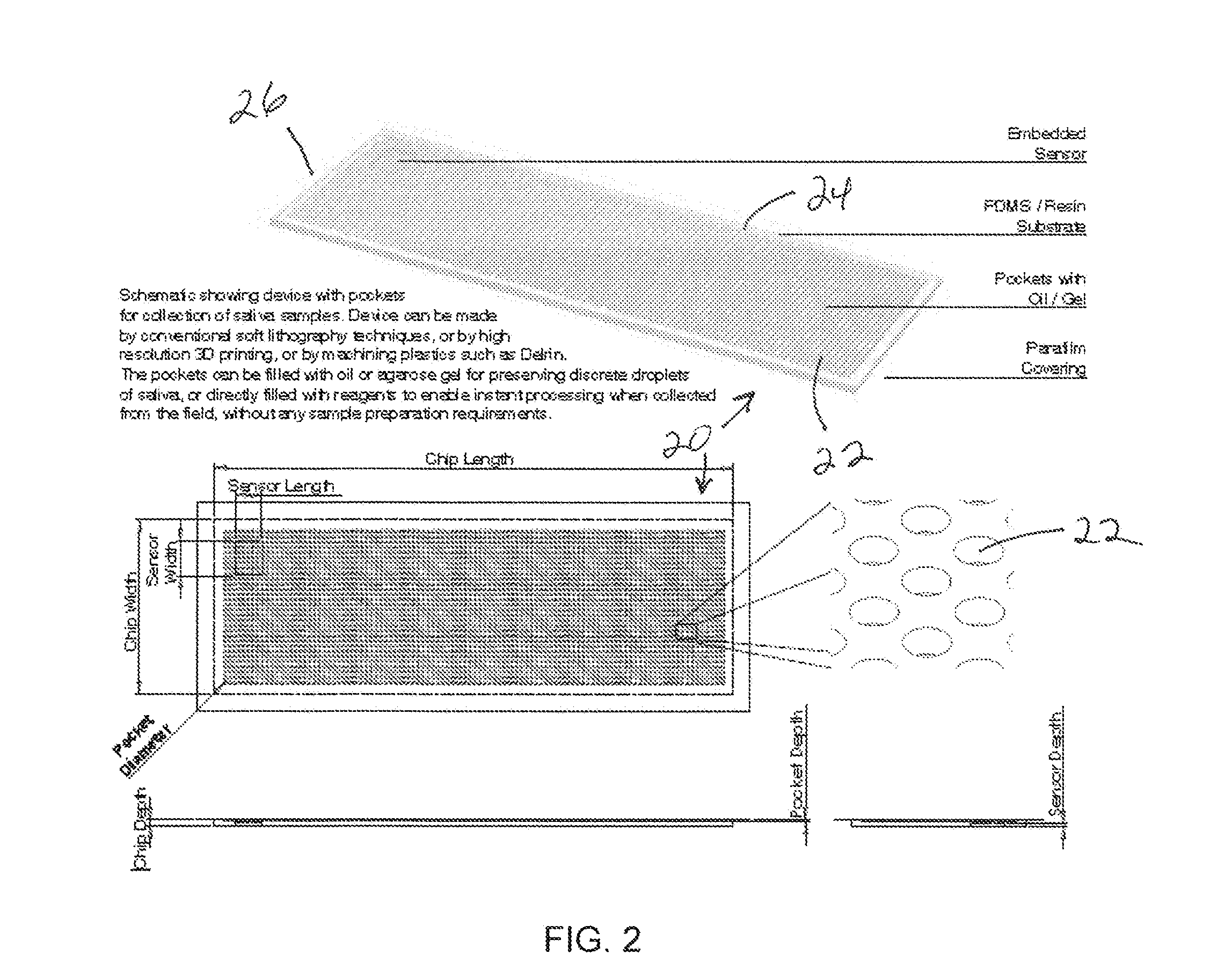Devices for Automated Sample Collection, Quantificatoin, and Detection for Insect Borne Bio-Agent Surveillance
a bioagent and automated technology, applied in the field of insect surveillance, can solve the problems of inability to use large-scale nationwide surveillance, prohibitively high levels of trained manpower, and difficult collection of dissections, and achieve the effect of convenient collection and preservation of droplets
- Summary
- Abstract
- Description
- Claims
- Application Information
AI Technical Summary
Benefits of technology
Problems solved by technology
Method used
Image
Examples
example 1
Oil-Filled Cavity Insect Saliva Sample Collecting Device
[0040]In perhaps the simplest embodiment, the present invention comprises an oil-filled cavity device 10 (FIG. 1) for collecting insect saliva samples. A substrate 12, which in a preferred embodiment, is a glass slide, supports the oil-filled cavity formed by an enclosed gasket 14 which creates a shallow enclosure that is filled with a fluid, such as mineral oil. The oil can be substituted with any medium that facilitates collection and preservation of the droplets, for example, distilled water, glycerol, agarose gel, honey, unpolymerized polydimethylsiloxane (PDMS) or waxes. The oil is retained inside the enclosure atop the substrate 12 by a covering 16, such as Parafilm® (Bemis Company, WI) which biting insects are able to pierce with their mouthparts to deposit the saliva sample. The gasket 14 can be formed of any suitable material, for example a silicone such as PDMS. The oil-filled cavity insect saliva sample collecting de...
example 2-2-d
Array Type Insect Saliva Sample Collecting Device
[0042]In a preferred embodiment of the present invention, an insect saliva sample collecting device is prepared for collecting samples of saliva deposited by a target insect that has been attracted to the device. One such device is a chip 20 (FIG. 2) which includes an array of wells or pockets 22 formed in substrate 24 and filled with a fluid which collects and retains the saliva deposited by a target insect. The substrate 24 can be made by conventional soft lithography techniques, by high-resolution 3-D printing techniques, or by machining plastics such as Delrin. The fluid filling the pockets or wells 22 is selected to collect, retain and preserve the saliva injected into it by the insect bite. Suitable fluids include oils or gels, such as agarose gel. Alternatively, the wells 22 may be directly filled with reagents to enable instant processing of the saliva samples when collected from the field, thus eliminating a step from the sam...
example 3
Paper Insect Saliva Sample Collecting Device
[0043]In another preferred embodiment of the present invention, a paper insect saliva sample collecting device 30 (FIG. 3) is created on a paper substrate 32. Paper is a suitable medium for preserving DNA. The paper substrate 32 is coated with a hydrophobic matrix 34 in which is formed an array of hydrophilic pockets 36. The device is made using techniques described in literature for patterning of paper and selectively altering its properties in desired areas to create platforms for low cost assays. In a preferred embodiment, the filter paper 32 is coated with a light-sensitive polymer, exposed to UV through a mask which covers the pockets 36, and then washed in a developing chemical. Accordingly, the unpolymerized polymer in the pockets, which was covered by the mask and not exposed to UV, is washed off. This leaves behind pockets 36 of the original paper 32, embedded in a matrix where the paper 32 is impregnated with the hardened UV-expo...
PUM
| Property | Measurement | Unit |
|---|---|---|
| Temperature | aaaaa | aaaaa |
| Radius | aaaaa | aaaaa |
| Area | aaaaa | aaaaa |
Abstract
Description
Claims
Application Information
 Login to View More
Login to View More - R&D
- Intellectual Property
- Life Sciences
- Materials
- Tech Scout
- Unparalleled Data Quality
- Higher Quality Content
- 60% Fewer Hallucinations
Browse by: Latest US Patents, China's latest patents, Technical Efficacy Thesaurus, Application Domain, Technology Topic, Popular Technical Reports.
© 2025 PatSnap. All rights reserved.Legal|Privacy policy|Modern Slavery Act Transparency Statement|Sitemap|About US| Contact US: help@patsnap.com



